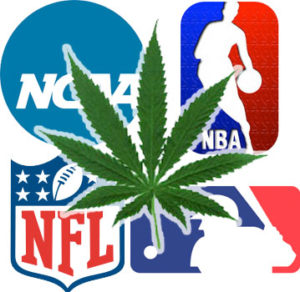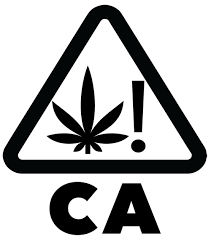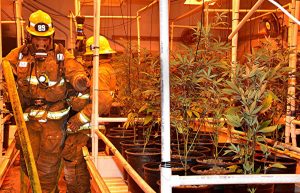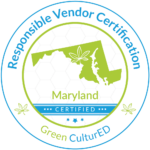First, before digging into Cannabis Social Equity Programs, let’s start with a little “marijuana history” to get some background…
Globally, it is known that the “War on Drugs” was a complete FAILURE (by the way… “drugs” won the war) that was popularized by a press conference given on June 18, 1971, by President Richard Nixon. And now even the etymology of “social equity” has quickly evolved to be more inclusive, going beyond being concerned with justice and fairness of social policy.
The cannabis industry has a long history of inequality… to “right these wrongs,” governments are now back-peddling their foolish “War on Drugs” which’s been an utter disaster and allowed authorities to use drugs as a pretext to terrorize and justification for ultra-violence against minority groups for years.
Etymology-speaking the word “social equity” has more of a holistic meaning now than it ever has now that we’re seeing other underrepresented groups including (but not limited to) BIOPTC+ minority-owned, LGBTQIA+, woman-owned, service-disabled, and veteran-owned dispensaries. These communities are included in these Social Equity Programs sprouting (pun intended 🌱) in the cannabis industry.
Words are changing as fast as the cannabis industry, the Oxford English Dictionary added a total of eighteen (18) new LGBTQ-related words in 2022 – an effort to acknowledge the diverse communities of LGBTQ people around the world, their shared and conflicting histories, and the new etymology for individuals speak to, write about, and organize around their identities.
If you look at the historical etymology of “marijuana” it has an interesting historical meaning that mirrors our current “War on Drugs” which produced 100’s (if not 1,000’s) of slang terms and different names used for “marijuana” to avoid police detection. According to Times Magazine, “there are at least 1,200 slang terms related to “marijuana” – or “cannabis” or “hashish” or “weed” or “pot” or, as some say, “asparagus.”
“And there are 100’s more to describe one’s state of intoxication after imbibing the drug,” according to slang scholar Jonathon Green. Even though slang is primarily a spoken-language phenomenon, by 2010 Green had assembled around 400,000 citations for slang vocabulary words and phrases, through assiduous and indefatigable research relying largely on printed sources (especially surviving early broadsheets and later newspapers).
How Did “Pot” Get Its Name
 This needless “War on Drugs” has produced an unprecedentedly different jargon used for “marijuana” or “pot,” but historically too, these slang terms have been derived from a combination of the geographic location and the appearance of the processed plant.
This needless “War on Drugs” has produced an unprecedentedly different jargon used for “marijuana” or “pot,” but historically too, these slang terms have been derived from a combination of the geographic location and the appearance of the processed plant.
It’s interesting to see that the current “War on Drugs” is similar to the Mexican Revolution, where the origin of the slang word “pot” begins… It was an armed struggle brought on by tremendous disagreement among the Mexican people over the dictatorship of President Porfirio Diaz who stayed in office for thirty-one (31) years.
The revolution was started by a new generation of leaders who wanted to participate in the political life of their country, but they were denied the opportunity by officials who were already entrenched in power and who were not about to give it up.
As reported by PBS, “After the Mexican Revolution of 1910, Mexican immigrants flooded into the U.S., introducing to American culture the recreational use of marijuana. The “drug” became associated with the immigrants, and the fear and prejudice about the Spanish-speaking newcomers became associated with marijuana.”
But why was “marijuana” called “pot”? So, you’ll be surprised to find out that the etymology of the word “pot” has nothing to do with kitchen cooking utensils. Historically, the shortened nickname “pot” comes from the Mexican-Spanish word “potiguaya” or “potaguaya” which means “marijuana leaves.”
It is a shortening of the word “potacion de guaya,” which is an alcoholic drink made of marijuana leaves and buds steeped in brandy or wine, and it means “the drink of grief”. Potacion de guaya is a tropical fruit that you typically can find at the grocery store called “guava;” this is used to make the alcohol for the potacion de guaya.
With immigration “pot” became new slang for “marijuana” and has been in common usage since the 1930s-1940s which has been a subject of lively arguments among etymologists pretty much since day one. So, that’s the reason why “marijuana” is called “pot” and was made a common term in the United States when it became popular during this historical immigration.
As the Mexican Revolution caused immigration to the United States which changed “pot/marijuana” verbiage to our current “War on Drugs,” that’s hurting people from diverse backgrounds by oppressive authorities… there’s finally global awareness of these “unjustified wrongs” to these underrepresented groups.
This inclusion has expanded over the last 50+ years since the “War on Drugs,” where initially, there was a common association between social equity and financial or resource distribution. Historically, people often related it to finances, property, taxation, and government decisions on resource allocation, BUT over time, the understanding of social equity has broadened to encompass various dimensions such as education, health, and treating people equally while considering their individual needs.
Diversity Plan Business Strategies
 To support and retain a diverse workforce, applicants and licensees should be creative in addressing barriers to advancement that may currently exist for individual employees, such as access to transportation, flexible work schedules, remote work opportunities, and educational requirements while being fair to all employees.
To support and retain a diverse workforce, applicants and licensees should be creative in addressing barriers to advancement that may currently exist for individual employees, such as access to transportation, flexible work schedules, remote work opportunities, and educational requirements while being fair to all employees.
Regardless of a business’s number of employees, we want to help provide some solutions to barriers faced by local employees or diverse populations before accepting employment. When interviewing a strong candidate for a position within an organization, the interviewer should ask them to suggest their thoughts on potential barriers to their advancement and offer creative solutions.
Diversity Plan Best Practices
- When creating a purpose statement, the applicant should codify the business’ culture through an organizational statement, or a mission statement that encompasses diversity and a culture of inclusion. The purpose statement should be one hundred (100) words or less.
- The applicant should create individual DPs to fit the business’s needs. Applicants should not copy and paste these goals or from another Diversity Plan.
- Cannabis operators should set goals that can be measured and accomplished, including a process for receiving feedback, and how they will communicate the goals to everyone in the organization.
- Operations should commit to implementing and upholding the written policies as part of day-to-day business.
- Your team should commit to making progress on the Diversity Plan’s goals each year.
Workforce Diversity Hiring Plan
A strategy for building a diverse workforce is required for a well-planned recruitment and employment plan that will help meet the organization’s goals of hiring employees from diverse populations. The following strategies and resources may help achieve success:
- Review the number and type of positions expected for diverse populations when the facility opens.
- Set diversity goals for employment to be objectively reasonable but list goals for each priority population. Seek not just to meet stated goals, but to exceed them.
- Consider how far a job candidate may travel for a position (especially for new entry-level workers) and what the business can offer a great candidate to make the job offer, position, and career opportunity appealing and lucrative.
- Provide transportation resources (ex. bikes, bus passes, etc.), employee equity opportunities, and/or flexible work schedules for diverse employees with family obligations.
- Highlight business culture to demonstrate it understands the value of diversity and inclusion in the workplace throughout the recruitment, hiring, and staff promotional process.
- Advertise employment opportunities internally, and in diverse publications, and social media outlets that target diverse populations to show this detailed level as part of the plan.
- Encourage current employees to refer a friend who identifies as one of the diverse populations for employment.
- Host recurring recruitment fairs, meetings, or tours with a focus on identified populations as well as all partnerships and locations should be specified and contacted in advance of being added to Diversity Plans.
- To understand and assess the current diversity statistics of the host community and surrounding communities.
- To understand the level of employment and unemployment in the local area, unemployment departments offer unemployment and employment statistics, diversity facts, and wage information for localities.
Strategies, Programs & Goals
 Applicants and licensees should be authentic, realistic, and intentional when designing programs that will allow them to reach and surpass diversity goals. The Diversity Plan should be created to fit the organizational needs. Programs should be tailored to fit the business culture, geographic reach, and goals.
Applicants and licensees should be authentic, realistic, and intentional when designing programs that will allow them to reach and surpass diversity goals. The Diversity Plan should be created to fit the organizational needs. Programs should be tailored to fit the business culture, geographic reach, and goals.
Implementation, execution, and consistently tracking outcomes will support and create upward mobility within the industry. Examples of strategies and programs that could effectuate the goals of a Diversity Plan, impact diverse populations, and promote the inclusion of diverse populations in the cannabis industry may include, but are not limited to, the following:
- Building training programs that will increase the number of individuals qualifying demographics in management and executive positions in the organization. Develop training programs that will increase internal promotions and cross-functional training for all positions.
- Establishing relationships with specific organizations that are diversity-focused to provide diversity and inclusion training and networking for new employees throughout the year.
- Creating a promotion process that employs equity principles for current employees consistent with federal and state employment laws.
- Creating a communications plan that reinforces the culture of diversity, inclusion, and respect among employees, and awareness of the organization’s Diversity Plan.
- Finding specific industry training and professional development opportunities and making access available to all employees.
- Providing antiracism and unconscious bias training for all employees (specify the topics, the trainers, and their specific qualifications).
- Developing a cross-functional, diversity-focused committee involving employees and management to meet regularly, focus on effective employee recruitment and retention efforts, review workplace programs, survey employees, and evaluate feedback for accountability. The plan can also specify who will serve on the committee.
- Identifying how the organizations will create a workspace that is safe, accepting, respectful, welcoming, comfortable, and supportive place to work.
- Establishing a diverse ownership and leadership team.
- Offering educational scholarships to diverse populations interested in entrepreneurship or expanding their career opportunities in this new industry.
- Providing tours of your facility to job training partners and community organizations to increase the diversity of job candidates.
- Creating year-round programs for apprenticeships, mentorships, and paid internships for diverse public populations to create an accessible pathway into the industry.
- Offering educational seminars and job training programs (in person or virtually) in areas largely populated by diverse individuals to help residents gain awareness about the cannabis industry, and the types of positions available, and how to access them.
- Provide key details such as partners that will assist you and your program, intended topics for all seminars, frequency, and duration of these seminars, number of intended participants, recruitment efforts to target your audience, and the different mentorship opportunities for participants seeking a job.
Scholarships & Business Social Equity Programs
 At Green CulturED, we’ve created our internal Social Equity Program (click here) to strongly support the importance of diversity and inclusion for creating a thriving cannabis industry. To contribute to this goal, we have developed two (2) very different Social Equity Programs, which aim to provide accessible eLearning solutions to both licensed businesses and underrepresented community members within the cannabis industry.
At Green CulturED, we’ve created our internal Social Equity Program (click here) to strongly support the importance of diversity and inclusion for creating a thriving cannabis industry. To contribute to this goal, we have developed two (2) very different Social Equity Programs, which aim to provide accessible eLearning solutions to both licensed businesses and underrepresented community members within the cannabis industry.
Monthly Scholarship Lottery
Monthly scholarships are awarded (click here) every month, where someone in our “cannabis-loving community” wins a Social Equity Scholarship by random selection to our Headquarters (or “HQ” for short) Learning Center: essentially an “all-access pass” to our course catalog.
This tuition-free lottery scholarship awards “HQ” Learning Center access (MSRP: $997.00 / Annually) for one (1) year and it’s an eLearning solution we’ve made to develop future leaders in the cannabis industry where they’ll know enough to do “Train-the-Trainer” approach. But, the following is required to participate:
- You MUST be part of any underrepresented group, different examples include BIPOC, LGBTQIA+, women-owned, military veterans, service-disabled, etc.
- You have EVER been arrested or legally convicted of using, selling, possessing, manufacturing, or cultivating cannabis (ending prohibition is a victory too).
Social Equity Business Program
As part of this program (click here), our Green CulturED Social Equity members receive a “forever 50% discount” on all team certifications and courses. By offering this discount, we aim to alleviate the burdensome aspects of the industry and ensure that Social Equity businesses can focus on maintaining compliance, achieving operational growth, and fostering employee success.
Our commitment to diversity and inclusion extends beyond just providing training opportunities. By providing a total eLearning solution that’s 100% made for the cannabis industry, we’re equipped to support diverse businesses that’ll tackle challenges, attract top talent, and cater to a wide range of their customers’ needs.
Social sustainability aims to build inclusive, just, and resilient societies where citizens have a voice, governments are responsive, and economic opportunities are accessible to all. Through our Social Equity Programs, we’re doing our very best to promote inclusivity, empowering through knowledge, and fostering resilient learning-based communities, we’re contributing to the social sustainability of the cannabis industry.
Let us know what you think.
- SEO Powered Content & PR Distribution. Get Amplified Today.
- PlatoData.Network Vertical Generative Ai. Empower Yourself. Access Here.
- PlatoAiStream. Web3 Intelligence. Knowledge Amplified. Access Here.
- PlatoESG. Carbon, CleanTech, Energy, Environment, Solar, Waste Management. Access Here.
- PlatoHealth. Biotech and Clinical Trials Intelligence. Access Here.
- Source: https://greencultured.co/cannabis-social-equity-industry-diversity-programs/
- :has
- :is
- :not
- :where
- $UP
- 00
- 000
- 1
- 100
- 175
- 200
- 2010
- 2022
- 221
- 300
- 31
- 321
- a
- About
- accepting
- access
- accessible
- accomplished
- According
- accountability
- Achieve
- achieving
- acknowledge
- added
- addressing
- advance
- advancement
- After
- against
- aim
- aims
- Alcohol
- All
- alleviate
- allocation
- allow
- allowed
- already
- also
- alt
- American
- among
- an
- and
- Annually
- Another
- any
- appealing
- appearance
- applicants
- approach
- ARE
- AREA
- areas
- arguments
- armed
- around
- arrested
- AS
- ask
- aspects
- assembled
- assess
- assist
- associated
- Association
- At
- attract
- audience
- Authentic
- Authorities
- available
- Available to all
- avoid
- awarded
- awards
- awareness
- backgrounds
- barriers
- BE
- became
- been
- before
- being
- BEST
- between
- Beyond
- bias
- BIPOC
- both
- brought
- build
- Building
- bus
- business
- businesses
- but
- by
- called
- CAN
- candidate
- candidates
- cannabis
- Cannabis Industry
- Career
- catalog
- cater
- caused
- Center
- certifications
- challenges
- changed
- changing
- Citizens
- combination
- comes
- comfortable
- commit
- commitment
- committee
- Common
- communicate
- Communications
- Communities
- community
- complete
- compliance
- concerned
- Conference
- Conflicting
- considering
- consistent
- consistently
- contribute
- contributing
- cooking
- copy
- could
- country
- course
- courses
- create
- created
- Creating
- Creative
- Culture
- Current
- Currently
- day
- day-to-day
- de
- decisions
- Demographics
- demonstrate
- denied
- departments
- Derived
- describe
- designing
- detailed
- details
- Detection
- develop
- developed
- Development
- DID
- different
- dimensions
- disaster
- Discount
- dispensaries
- distribution
- diverse
- Diversity
- Diversity and inclusion
- do
- doing
- Drink
- drug
- Drugs
- duration
- during
- each
- Early
- Economic
- Education
- educational
- Effective
- effort
- efforts
- eighteen
- elearning
- Employee
- employees
- employment
- employs
- empowering
- encompass
- encompasses
- ending
- English
- enough
- ensure
- entrenched
- entrepreneurship
- entry-level
- equally
- equipped
- equity
- especially
- essentially
- etc
- Ether (ETH)
- evaluate
- Even
- EVER
- Every
- everyone
- evolved
- examples
- exceed
- execution
- executive
- exist
- expanded
- expanding
- expected
- extends
- faced
- Facility
- facts
- Failure
- fair
- fairness
- fairs
- family
- far
- FAST
- fear
- Federal
- feedback
- Finally
- Finances
- financial
- Find
- fit
- flexible
- flooded
- Focus
- following
- For
- fostering
- Frequency
- friend
- from
- future
- future leaders
- Gain
- generation
- geographic
- get
- Give
- given
- Global
- goal
- Goals
- going
- Government
- Governments
- great
- Green
- grocery
- Group
- Group’s
- Growth
- had
- Have
- Headquarters
- Health
- help
- High
- Hiring
- historical
- historically
- histories
- history
- holistic
- host
- How
- How To
- HTML
- HTTPS
- hundred
- identified
- identifies
- identities
- Immigrants
- immigration
- Impact
- implementing
- importance
- in
- include
- included
- Including
- inclusion
- Inclusive
- Inclusivity
- Increase
- individual
- individuals
- industry
- information
- initially
- intended
- Intentional
- interested
- interesting
- internal
- internally
- internships
- Interviewer
- into
- introducing
- involving
- IT
- ITS
- jargon
- Job
- jpeg
- jpg
- june
- just
- Justice
- Key
- kitchen
- Know
- knowledge
- known
- largely
- Last
- later
- Laws
- leaders
- Leadership
- learning
- least
- leaves
- legally
- less
- Level
- LGBTQ
- Licensed
- licensees
- Life
- Limited
- List
- little
- local
- location
- locations
- Long
- Look
- lottery
- lucrative
- made
- maintaining
- make
- Making
- management
- manufacturing
- marijuana
- max-width
- May..
- meaning
- means
- measured
- Media
- Media Outlets
- Meet
- meetings
- Members
- Mentorship
- Military
- minority
- Mission
- Mission Statement
- mobility
- Month
- more
- much
- must
- names
- Needless
- needs
- networking
- New
- newcomers
- Newspapers
- nothing
- now
- number
- objectively
- obligations
- of
- offer
- offering
- Office
- officials
- often
- on
- ONE
- opens
- operational
- operators
- opportunities
- Opportunity
- or
- organization
- organizational
- organizations
- Origin
- Other
- our
- out
- outcomes
- Outlets
- over
- ownership
- paid
- part
- participants
- participate
- partners
- partnerships
- passes
- pathway
- PBS
- People
- person
- phenomenon
- phrases
- Place
- plan
- plans
- plant
- plato
- Plato Data Intelligence
- PlatoData
- Police
- policies
- policy
- political
- Popular
- populated
- population
- populations
- position
- positions
- potential
- power
- press
- pretty
- primarily
- principles
- priority
- process
- processed
- Produced
- professional
- Program
- Programs
- Progress
- Prohibition
- promote
- promotion
- promotional
- Promotions
- property
- provide
- providing
- public
- publications
- purpose
- qualifications
- qualifying
- quickly
- random
- range
- reach
- realistic
- reason
- reasonable
- receive
- receiving
- Recreational
- recruitment
- recurring
- refer
- regularly
- reinforces
- related
- Relationships
- relying
- remote
- remote work
- Reported
- required
- Requirements
- research
- residents
- resilient
- resource
- Resources
- respect
- responsive
- retain
- retention
- review
- Revolution
- Richard
- s
- safe
- say
- Scholar
- scholarships
- see
- seeing
- Seek
- seeking
- selection
- Selling
- serve
- set
- shared
- Short
- shortened
- should
- show
- similar
- since
- So
- Social
- social media
- solution
- Solutions
- some
- Someone
- Sources
- speak
- specific
- specified
- Staff
- start
- started
- State
- stated
- Statement
- States
- statistics
- stayed
- store
- strategies
- Strategy
- strong
- strongly
- Struggle
- subject
- success
- such
- suggest
- support
- supportive
- surpass
- surprised
- Surrounding
- Survey
- Sustainability
- tackle
- tailored
- Talent
- Target
- Taxation
- team
- term
- terms
- than
- that
- The
- the world
- their
- Them
- There.
- These
- they
- Think
- this
- though?
- thriving
- Through
- throughout
- time
- to
- too
- top
- Topics
- Total
- tours
- Tracking
- Training
- transportation
- travel
- treating
- tremendous
- two
- type
- types
- typically
- u.s.
- underrepresented
- understand
- understanding
- understands
- unemployment
- United
- United States
- upholding
- upward
- us
- Usage
- use
- used
- using
- value
- various
- very
- Veterans
- victory
- virtually
- Voice
- wage
- want
- wanted
- war
- was
- we
- welcoming
- WELL
- were
- What
- when
- which
- while
- WHO
- why
- wide
- Wide range
- Wikipedia
- will
- WINE
- Wins
- with
- within
- Won
- Word
- words
- Work
- workers
- Workforce
- Workplace
- world
- write
- written
- year
- years
- you
- Your
- zephyrnet







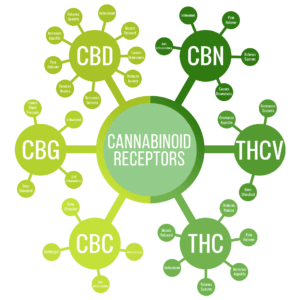
![[NEW] Cannabis Business Operations “Freshly Released” | Green CulturED](https://platoaistream.net/wp-content/uploads/2023/10/new-cannabis-business-operations-freshly-released-green-cultured-360x360.png)
